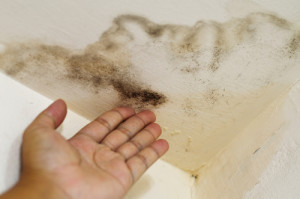 Homeowners don’t have to worry about mold during the winter months: Fact or fiction?
Homeowners don’t have to worry about mold during the winter months: Fact or fiction?
The truth is that mold can definitely be a problem during cold winter months—although it’s easy to see why people believe otherwise. The air is dry, the temperature is cold, and levels of liquid precipitation are lower. Logically speaking, mold would be unable to thrive in such chilly, dry conditions.
But that doesn’t explain the many thousands of mold infestations experienced by home and business owners every winter.
So what does explain it? Well, there are four main reasons. Once you understand them, you’ll be better equipped to protect your home and family against mold throughout the year.
1. Humidity
This might look strange on top of the list, since humid air is generally not a problem outside during winter. But what about inside? Since winter air is indeed on the dry side, people turn to humidifiers for comfort. This helps to curb common problems like blocked nasal passages and trouble sleeping—but it also opens the door to mold. Constantly running humidifiers, especially in these same place, allows mold to grow and colonize. Sometimes it grows in the various components of the humidifier itself, which means the spores are being transported throughout the home.
To avoid this, don’t overuse humidifiers. If you do use them, clean them often.
2. Melting Snow
This is probably the most obvious mold risk during the winter. The temperature rarely stays below freezing for weeks or months on end. In fact, temperatures often climb above freezing for extended periods of time—which means that snow around your house is melting. Once that melting snow leaks and seeps into your basement or other area of your home, it combines with the warmth from your HVAC system to form good conditions for mold growth.
To prevent this, do a routine sweep of your home for any water damage, especially during periods of extended warmth and snowmelt. Basement waterproofing can offer additional protection.
3. Stale Air
Ventilation is no friend of mold. When fresh, clean air is exchanged throughout the home, the risk of mold problems is much lower. The problem here is that we work hard during the winter to seal our homes against the chill and save on energy costs. This often results in poor ventilation and air exchange, giving mold a better chance to thrive and grow.
The most obvious way to prevent this is to install a ventilator in your home. Not only does it reduce your risk of mold growth, it can actually make your heating systems more efficient. If a ventilator is not possible, try to open the windows on warmer days and use electric fans to exchange the air.
4. Heat
Most mold needs plenty of warmth to grow. In fact, your home may be the one place mold can grow during a cold winter—and it will look for any opportunity to do so. If the toast temperature inside your home is combined with decent levels of moisture, you can easily end up with a winter mold problem.
The usual ways of preventing mold growth are just as effective during the colder months as they are during summer. That means keeping your home clean, encouraging good air flow, and keeping the humidity low.
Preventing Mold All Winter Long
Statistically speaking, the winter months are indeed a lower risk for mold growth. But that doesn’t mean it can’t or won’t happen—especially if you let your guard down. Warmth, moisture and stale air are the key factors to watch. With a little effort, you’ll be able to stay mold-free all the way into spring.
Thanks for stopping by. Your questions and comments are welcomed!

